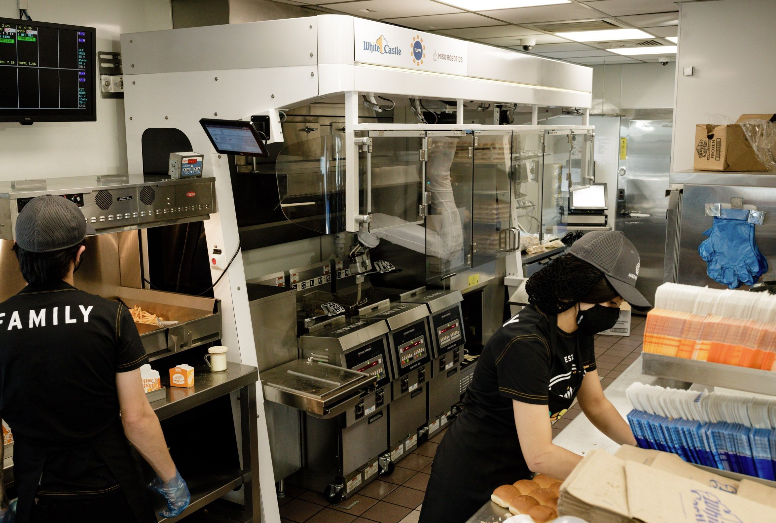As restaurants across the country adjust for a post-pandemic world, driven mainly by the shift to a contactless environment via the adoption of automation and robotics, fast-food restaurant operator White Castle announced Tuesday morning additional robot deployments were nearing in the pursuit to automate kitchens.
White Castle, who announced a partnership with Miso Robotics’ Flippy, a robotic chef, in July, which we’ve highlighted for years (see here & here), released a statement, announcing ten White Castle locations will soon receive robotic chefs.
“The move will accelerate the adoption of artificial intelligence and robotics in the restaurant industry, critical technologies needed to tackle new pandemic challenges such as social distancing in kitchens, takeout and delivery demand, and higher standards for health and safety via contactless solutions,” the press release read.
Miso released a new Flippy earlier this month, called Flippy Robot-on-a-Rail (ROAR), that will speed up the production time of meals and improve quality and taste.

“Artificial intelligence and automation have been an area White Castle has wanted to experiment with to optimize our operations and provide a better work environment for our team members,” said Lisa Ingram, the CEO of White Castle, in a statement. “This pilot is putting us on that path – and we couldn’t be more pleased to continue our work with Miso Robotics and pave the way for greater adoption of cutting-edge technology in the fast-food industry.”
The robots have so far been helpful during late-night shifts for the 24-hour restaurant, with job slots difficult to fill. Despite the virus pandemic, the company said customers are coming in. Flippy’s robots prepare upwards of 360 baskets of fried foods per day.
The virus pandemic, forcing companies to limit interaction between customers and employees, has accelerated the trend of robots replacing humans in the workplace, which will lead to more job loss and rising wealth inequality for the poor.
“Policymakers need to rethink how to improve the safety net for workers abruptly displaced by the pandemic, who also face an imminent risk of being replaced by technology, as well as how to prepare for the complex workforce transitions ahead,” the Federal Reserve Bank of Philadelphia said in a report released in September.
Suppose the virus crisis becomes more prolonged, as it appears in late October. In that case, as companies struggle to survive, many could turn to robotics and fire human workers, a move that would make customers feel more comfortable as there is no proven or commercially available vaccine for COVID-19, but ultimately will delay a labor market recovery.